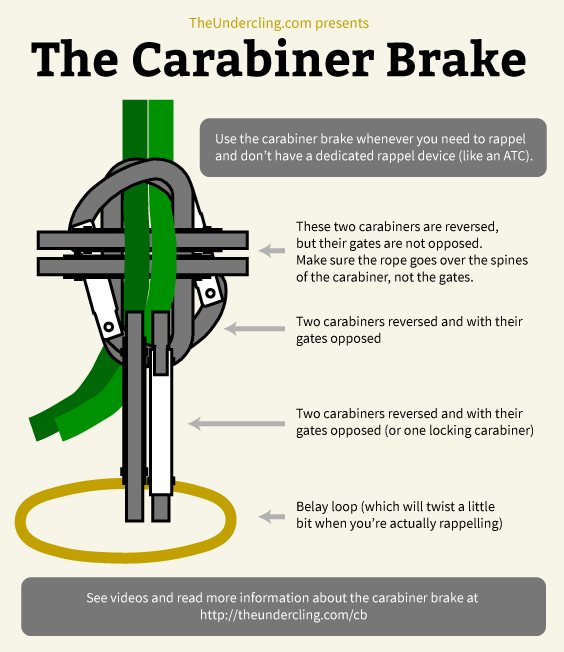Rappelling With Carabiners: The Carabiner Brake Rappel
Whenever possible, you’ll probably want to rappel with your tube-style belay/rappel device, like an ATC. But sometimes that isn’t possible. Maybe the person you’re climbing with is belaying with a Gri-Gri and doesn’t have a device that he/she can rappel down two rope strands with. Maybe you dropped your belay device and need to figure out some other way of getting down the rock or mountain. That’s where the carabiner brake rappel method comes into play. It’s a really, really good trick to be aware of just in case you (or someone you climb with) ever need it.
All you need to create a carabiner brake is five carabiners, which you’ll already have on you if you’re climbing. At least one should be a locking biner, but the others can be any mix of locking or non-locking. (If you don’t have that one locking carabiner, you can use two non-locking carabiners with their gates opposed instead.)
Here’s the anatomy of a carabiner brake:

The video below shows how to create a carabiner brake using five carabiners (one locking pear-shaped biner and five non-locking ovals):
And then this next video shows creating a carabiner brake with three pear-shaped lockers and two offset D-shaped non-lockers:
Note the faster method of configuring the carabiner brake that the guy does in this second video. The method in the first method is perfectly fine, but the second is faster and easier. Still, you should know both methods, since the size and shapes of the carabiners you have on you at any given time may make one of the methods more feasible than the other.
The carabiner brake rappel method can be used both on a single strand of rope (as shown in video #2 above) and on dual strands (as shown in video #1). Make sure all pairs of carabiners have their gates opposed.
THERE IS ONE REALLY IMPORTANT THING TO KEEP IN MIND WHEN CONFIGURING THE CARABINER BRAKE. The rope(s) need to be running over the spines of the carabiners and not the gates.